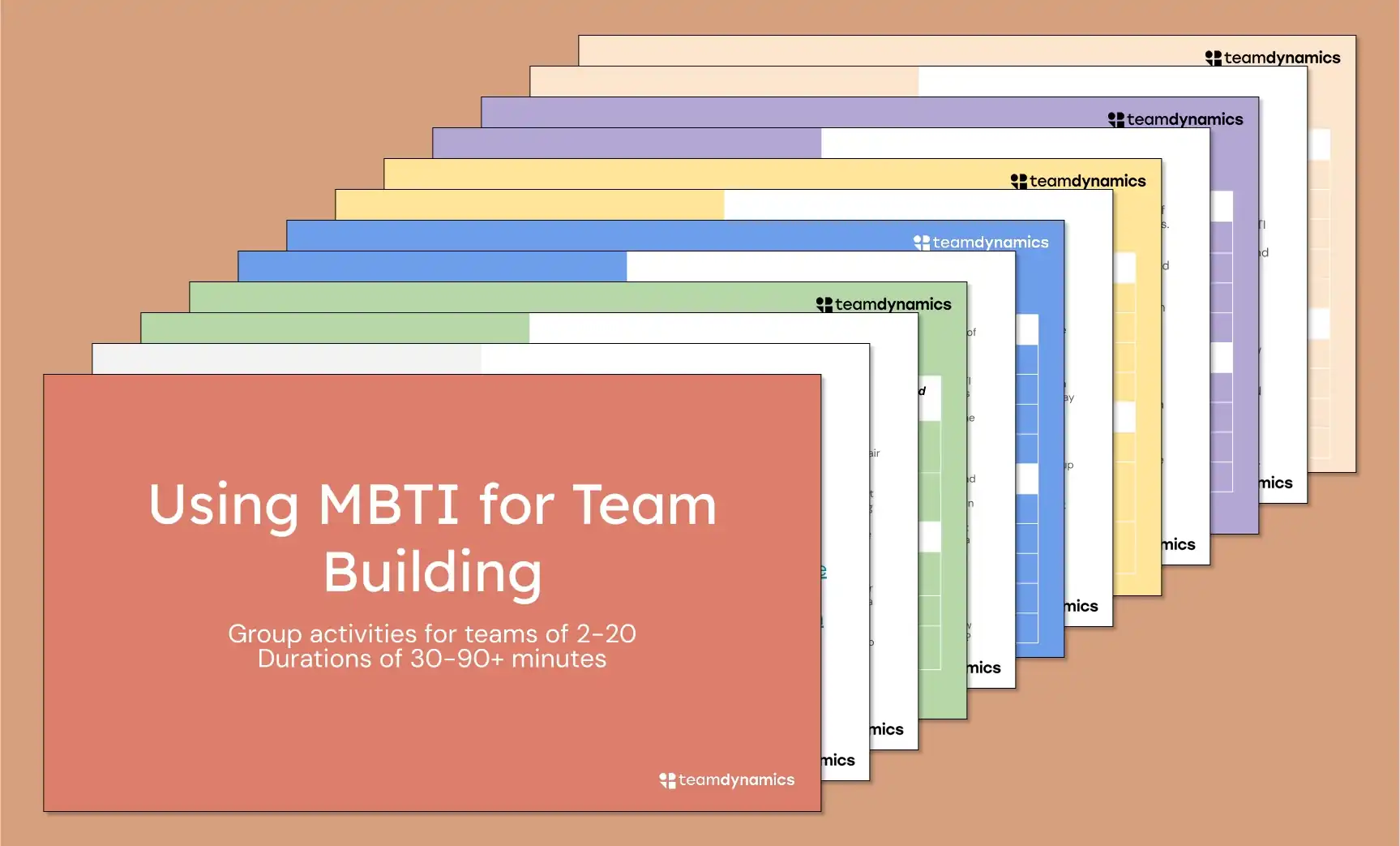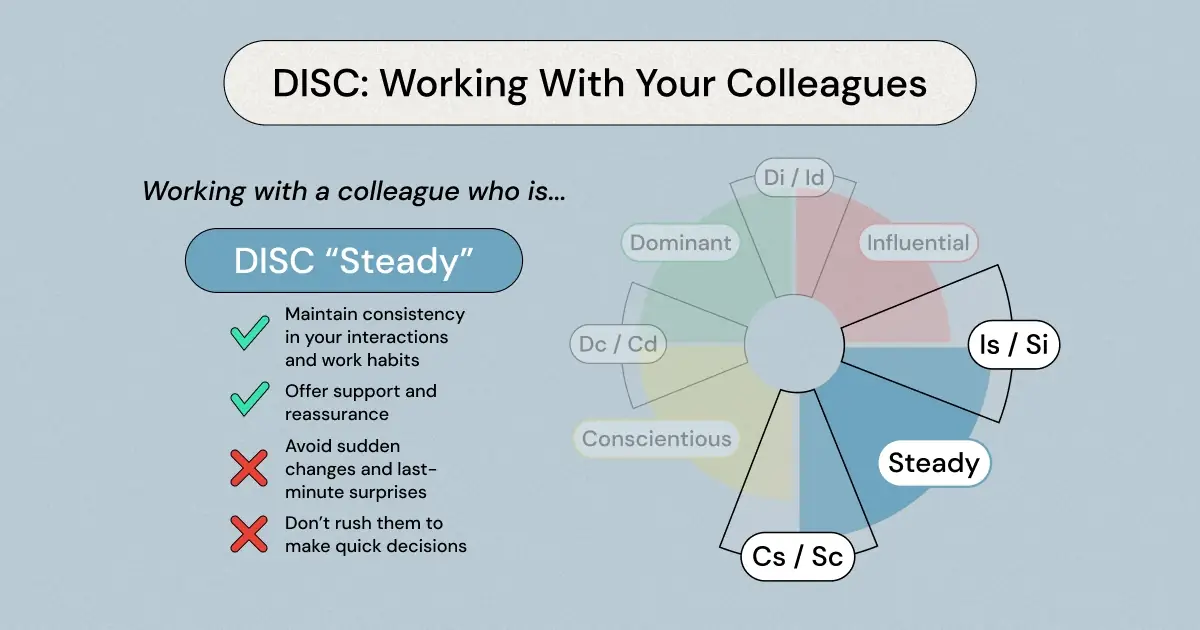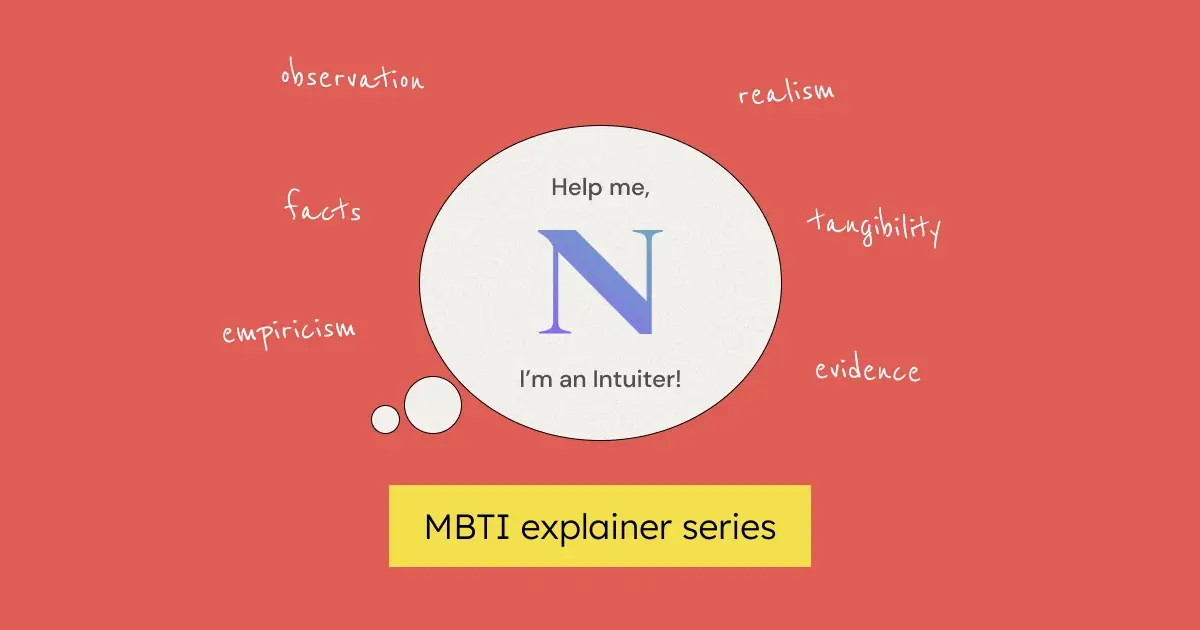Welcome to a guide specially designed for those of you who are 'Thinkers' on the MBTI scale, but find yourselves in a team that's teeming with 'Feelers'. If you've ever felt like you're speaking a different language at work, then this guide is for you. (Are you a Feeler looking to get along better with your Thinker colleagues? Check out our other resource guide!)
The Myers-Briggs Type Indicator (MBTI) classifies us as 'Thinkers' or 'Feelers' based on our preferred decision-making style. As Thinkers, we tend to rely on logic, objectivity, and a focus on tasks and functions. Feelers, on the other hand, lean more towards empathy, values, and the consideration of people and their emotions.
Now, imagine the Thinker you are, swimming in a sea of Feelers at work. It can feel a bit like trying to solve a math problem in the middle of a poetry recital, can't it? It can be tough to navigate a team environment where decisions are made based on subjective feelings and emotional considerations, rather than objective facts and logical analysis.
However, it's important to remember that a strong team is all about balance and understanding. The magic word here is 'MBTI chemistry'. By appreciating the differences between Thinkers and Feelers, we can create a harmonious and productive work environment where everyone feels valued and heard. So, stick with us as we delve into strategies and examples that can help you, as a Thinker, thrive in a Feeler-dominated environment.
Understanding the Feeler Mindset
To foster better MBTI chemistry in a team, it's crucial to first understand the mindset of your team members. If you're a Thinker, you might find yourself puzzled by how Feelers make decisions. They might seem overly emotional or subjective, but there's a method to their apparent madness.
Feelers, according to the MBTI scale, are individuals who primarily make decisions based on their emotions, values, and the potential impact on others. They deeply care about harmony and prioritize maintaining positive relationships. They are sensitive to the emotional climate of a situation and often consider the personal implications of a decision, not just the logical or objective factors.
So, why do Feelers value emotional consideration in decision-making? For them, it's not just about reaching a conclusion or solving a problem. It's about how the decision will affect people. They believe that considering the emotional aspects leads to decisions that are more compassionate, considerate, and ultimately, beneficial for everyone involved.
{{inline-cta}}
Imagine you're in a team meeting discussing a significant change in a project. A Feeler, let's call her Emily, may raise concerns about how this change could affect the team's morale or the client's satisfaction. Emily might say, "I understand that from a cost and time perspective, this change makes sense. However, have we considered how our team might feel about this? They've been working hard on the original plan, and this might feel like their efforts have been disregarded. Also, how about our client? They might feel blindsided by this change."
In this instance, Emily's focus isn't primarily on the logical and practical implications of the decision. Instead, she emphasizes the emotional and interpersonal consequences. Understanding this mindset is the first step towards better MBTI team chemistry.
Challenges for Thinkers in a Feeler-Dominated Environment
As a Thinker in a Feelers' world, you might often feel like you're swimming against the current. Thinkers are rational and objective, making decisions based on logical analysis and cold, hard facts. On the other hand, Feelers are guided by their emotions, personal values, and the potential impact of their decisions on others. They prioritize harmony and cooperation, often putting people before processes.
In a Feeler-dominated environment, a Thinker's approach to problem-solving and decision-making might be seen as too direct, impersonal, or even harsh. It's not uncommon for Feelers to misinterpret a Thinker's straightforwardness as insensitivity.
For instance, imagine a team meeting where you, the Thinker, propose cutting down on company-wide meetings to increase productivity. You've done your research and found data to support this—less time in meetings means more time for tasks, leading to higher output. This is a logical decision from a Thinker's perspective.
Looking to use MBTI for team building? Download these free templates for MBTI team building workshops!
However, your Feeler colleagues might see this differently. They might value these meetings as a chance for team bonding and mutual understanding, focusing less on the 'wasted' time and more on the intangible benefits of unity and morale. Your well-intentioned, logic-based suggestion could be misunderstood as you undervaluing the importance of team cohesion, leading to your idea being dismissed or overlooked.
These scenarios can be frustrating and demoralizing for a Thinker. But don't despair—understanding these dynamics is the first step towards improving MBTI team chemistry and leveraging your strengths in a Feeler-dominated environment. Stay tuned for practical strategies on how to navigate these challenges.
Strategies for Thinkers to Navigate a Feeler-Dominated Team
If you're a Thinker finding it challenging to work in a Feeler-dominated team, don't fret. Here are six practical strategies to help you navigate this emotional landscape, improve MBTI team chemistry, and leverage your logical prowess:
Strategy 1: Unleash the Power of Emotional Intelligence
Emotional intelligence is about more than recognizing your own feelings; it's about understanding and responding to the emotions of others. This is particularly important when working with Feelers, who often make decisions based on how they feel about a situation. So, if a team member appears frustrated by a sudden change in project plans, try to understand the emotions driving their reaction. Recognize that it's not the new plan itself causing upset, but the unexpected disruption. You could show empathy and understanding by saying something like, "I can see how this sudden shift could be unsettling. Let's work through this together to ensure we're still on track." This approach validates their feelings and assures them that you're there to support them.
Strategy 2: Master the Art of Active Listening
Active listening is an essential skill when dealing with Feelers. They value being heard and understood, so during conversations, make an effort to show you're fully engaged. This could be as simple as nodding to show understanding or giving verbal cues like "I see" or "Go on." If a colleague raises a concern, demonstrate your understanding by paraphrasing their worry back to them, "So, if I'm hearing you correctly, you're concerned that we might not meet our deadline?" This makes them feel valued and confirms that you truly comprehend their perspective.
Strategy 3: Channel Empathy to Connect
Feelers appreciate when others acknowledge their feelings. If a teammate is feeling overwhelmed by an upcoming deadline, don't rush to offer solutions. First, empathize with their situation. Say something like, "I can see why this looming deadline could be causing you stress." Then, you can follow up with, "Let's see how we can break this down into manageable tasks." By acknowledging their feelings before moving into problem-solving mode, you show you care about their emotional wellbeing, not just the end goal.
Strategy 4: Unveil Your Thought Process
Thinkers tend to make decisions based on logic and objective analysis. But to work effectively with Feelers, it's crucial to communicate the reasoning behind your decisions clearly. If you suggest reducing team meetings, explain the benefits beyond just saving time. Highlight how fewer meetings can create space for deeper one-on-one conversations, increase focus on individual tasks, and even allow for more creative thinking. This will help Feelers understand the 'why' behind your decisions, making them more likely to support your proposals.
Strategy 5: Cultivate a Culture of Appreciation
Feelers respond positively to praise and recognition, so make an effort to acknowledge your team members' contributions regularly. This could be as simple as saying, "Your presentation was well-prepared and engaging, I can see you put a lot of effort into it," or, "Your idea in today's meeting was really insightful, it could really move our project forward." These expressions of appreciation show that you value their efforts and contributions, fostering a positive team environment and boosting team morale.
Strategy 6: Champion Collaborative Decision-Making
Including your team in the decision-making process can be particularly effective when working with Feelers. If you're considering changing a work procedure, ask for their feedback. You might say, "I'm thinking about revising this process to make it more efficient. I'd love to hear your thoughts or any concerns you might have." This not only shows respect for their opinions but also allows for a more balanced decision that takes both emotional and logical aspects into account. Remember, even if you have all the facts, the emotional insight from Feelers can add a valuable perspective to the decision-making process.
Implementing these strategies can help you build strong relationships with your Feeler colleagues, fostering a harmonious and productive work environment. Remember, a balance of thinking and feeling can drive innovative solutions and create a dynamic team.
The Value of Balance in Decision-Making
When it comes to decision-making, balancing the strengths of both Thinkers and Feelers can yield remarkable results. The logical precision of Thinkers and the empathetic understanding of Feelers can create a unique harmony - the ideal MBTI chemistry.
Think about it this way: A ship on the ocean needs both a compass and a map to reach its destination. Thinkers are like the compass, giving direction and maintaining an objective course. Feelers, on the other hand, are the map, providing context, highlighting potential challenges, and considering the human element.
When both perspectives collaborate, decisions become holistic. They take into account the facts and figures without disregarding the feelings and concerns of the team members. It's not about one perspective being superior; it's about combining strengths to navigate the complexities of the business world.
Let's look at a real-world example. Suppose your team is deciding whether to launch a new product. The Thinkers might focus on market research, profitability forecasts, and competitive analysis. On the other hand, Feelers might consider the team's passion for the project, customer needs, and potential social impact. By blending these perspectives, the team can make a well-rounded decision that considers both the business and human factors. The result? A product launch that not only meets the market demand but also resonates with customers on an emotional level, leading to a successful outcome.
Remember, balance in decision-making doesn't dilute your team's effectiveness; instead, it enhances it. By appreciating the strengths of both Thinkers and Feelers, your team can foster a truly dynamic MBTI chemistry.
Conclusion
Navigating a Feeler-dominated environment may initially seem challenging for Thinkers, but remember: diversity in thought and decision-making is the secret sauce to creating optimal MBTI chemistry. By understanding the Feeler mindset, acknowledging the challenges, and actively employing strategies to foster harmony, Thinkers can not only coexist but truly flourish in a team rich in emotional intelligence.
Here's a quick recap: First, understanding and valuing Feelers' emotional consideration in decision-making paves the way for better communication and mutual respect. Second, recognizing the hurdles you might face as a Thinker in a Feeler-dominated team helps anticipate and mitigate misunderstandings. Third, employing strategies like open communication, active listening, showing empathy, and leveraging your strengths can significantly improve your interactions with your Feeler teammates.
Embracing your unique strengths as a Thinker and valuing the contributions of Feelers can lead to a team environment that's not just productive, but also supportive and fulfilling. The rich blend of logical thinking and emotional understanding creates a balanced decision-making process, leading to comprehensive solutions that consider every aspect of a situation.
When you foster good MBTI chemistry, you're not just improving your current team dynamics; you're cultivating skills that will make you a versatile team player in any environment. As the old saying goes, "Alone we can do so little; together we can do so much." So, Thinkers, it's time to embrace the world of Feelers, because together, you can achieve extraordinary things.
Check out our other MBTI resources!
We hope you've found this guide useful. Remember, everyone's experience is unique, and it's about finding strategies that work best for you. If you enjoyed reading this, don't keep it to yourself! Share it with your friends, colleagues, or anyone you think could benefit from it. Let's create a more understanding and inclusive workplace together!
MBTI is one of the most popular personality tests, and people are always asking us how they can better use it with their teams. Here are a few other useful articles you can try:
And if you're looking to crack the code on working with a specific MBTI type, check out our guides written just for you:
Interested in diving deeper into personality types, teamwork, and team performance? We've got a treasure trove of insightful articles just waiting for you to explore. Check out our other blogs on topics like team dynamics, effective communication strategies, and more in-depth dives into different personality tests. And check back often - we're always publishing more great content!




.png)









































